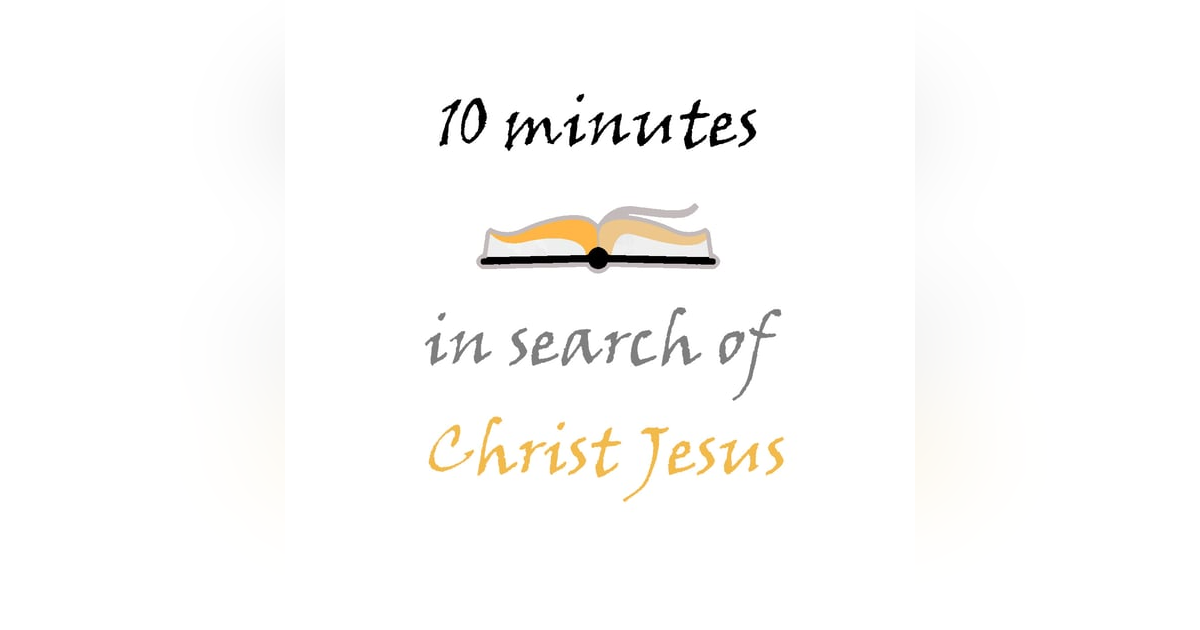

Sign up to get updates from us
By signing up, you agree to receive email from this podcast.

Wednesday, 13 July 2022
So he commanded the chariot to stand still. And both Philip and the eunuch went down into the water, and he baptized him. Acts 8:38
The previous verse conveyed the proclamation by the eunuch that he believed the gospel. As...

So he commanded the chariot to stand still. And both Philip and the eunuch went down into the water, and he baptized him. Acts 8:38
The previous verse conveyed the proclamation by the eunuch that he believed the gospel. As such, he was saved (Ephesians 1:13, 14, etc.). With that noted, it next says, “So he commanded the chariot to stand still.”
It is certainly the eunuch who gave the command. Without any intervening words, it is obvious that he was unwilling to wait another minute to comply with the command of the Lord that is to accompany acceptance of the gospel –
“‘Go therefore and make disciples of all the nations, baptizing them in the name of the Father and of the Son and of the Holy Spirit, 20 teaching them to observe all things that I have commanded you; and lo, I am with you always, even to the end of the age.’ Amen.” Matthew 28:19, 20
The notable point to consider is that nothing is said in the account of Philip’s talk with the eunuch concerning baptism. And yet, the eunuch is the one who is said (verse 8:36) to have broached the subject. Baptism would have been wholly unknown to him as a rite of faith in Christ Jesus, and yet he both asked about it and then commanded the chariot to stand still the moment that he had professed his faith in the Lord.
In other words, and what must be the case, is that Philip – as a part of his evangelization – specifically discussed the matter of baptism. They may have talked about a thousand other things as well, but this account mentions none of them, including the Lord’s Supper, right living, holiness, Jesus’ genealogy, or innumerable other points of doctrine concerning life in Christ.
But in his zeal to be obedient to the Lord in whom he professed faith, he initiates the subject in this account. As such, Luke records, “And both Philip and the eunuch went down.”
They got down from the chariot and went to whatever source of water was there. Nothing is said of those who are with him. It is possible that Philip baptized one or more of the eunuch’s cohorts, but the attention is on him. If others heard and believed, their faith and baptism are simply overlooked. He stands as the focus of the narrative.
Next, it says they went “into the water.” Much discussion has been made concerning these words as if they prove full immersion was the standard practice. But the Greek word can mean “to” or “into” as well. There is no point in speculating on this. The word transliterated as “baptize” speaks for itself. It means to submerge. To do anything else defeats the imagery of Christ. Further, baptism always follows faith in the Bible.
As such, Luke says, “and he baptized him.” Though the account is descriptive, it is in compliance with the word of the Lord, and it fits the repeated pattern in Acts where every person who comes to be a believer in Christ is seen to receive baptism.
As for the eunuch, his faith in Christ becomes a part of a greater pattern that goes back to the early Genesis account. In the record of the sons of Noah, they are named in the order of Shem, Ham, and Japheth. This is repeated five times in Genesis and then in 1 Chronicles. These three sons represent all of humanity today.
Shem, though not the eldest, is mentioned first, and those of his line are the first to receive baptism (Acts 2). The next son, Ham, is now represented by this Ethiopian eunuch. The final son, Japheth, will be represented in this pattern in Acts 10. Thus, the order of the sons of Genesis is followed exactingly in Acts in relation to faith, and then baptism, of these people groups.
Life application: A few questions to understand proper doctrine:
As all true believers are a part of the one and only New Covenant, and as Jesus ties the rite of baptism into the proper practice set forth for believers (just as the Lord’s Supper is), it is the height of hypocrisy for someone to accept the Lord’s Supper and yet not accept baptism – both in doctrine and in practice. It shows a poor understanding of doctrine, a streak of disobedience to the word of the Lord, and an attitude of arrogance that cannot be considered acceptable within the faith.
For proper doctrine, follow the three points noted in the main body of the commentary above. Anything else is disobedience to the word of the Lord.
Lord God, help us to think clearly concerning what Your word is saying. Help us to properly divide what is being said. And help us not get caught up in false teachings that improperly handle this sacred treasure You have given us. May we be found as acceptable vessels, ready for Your use at all times. Amen.